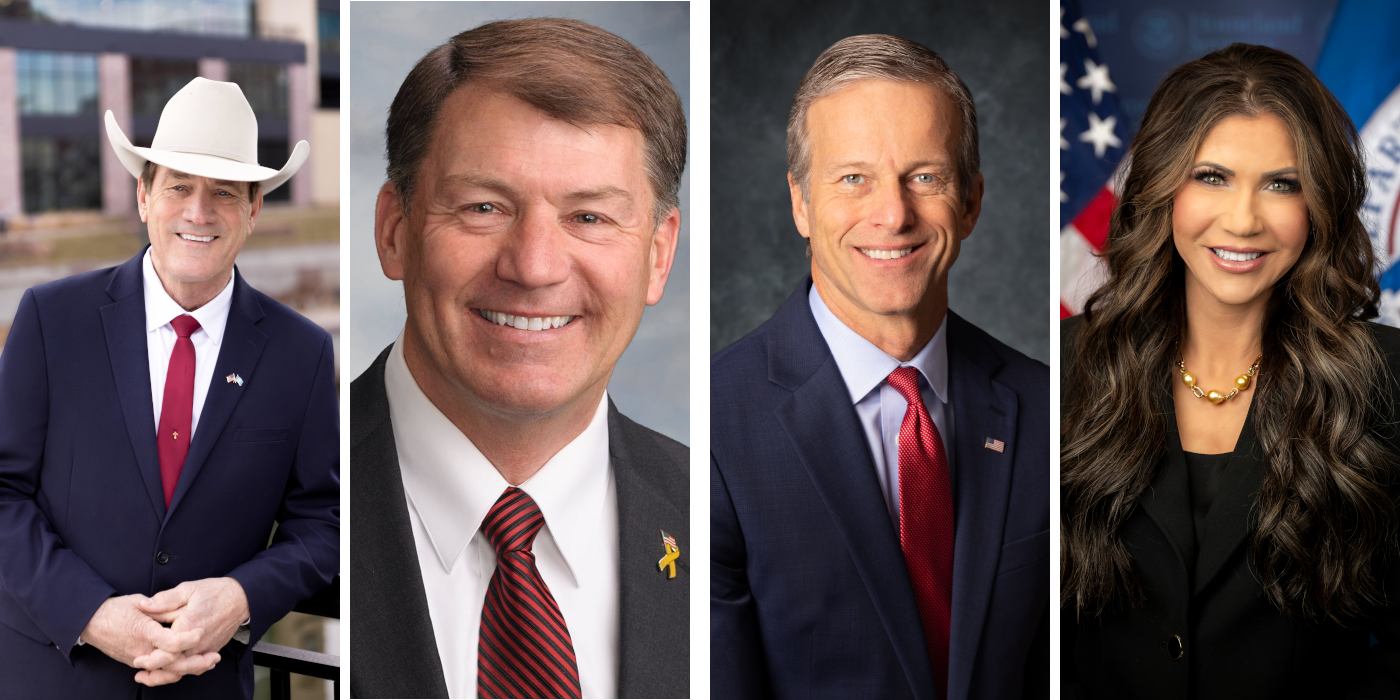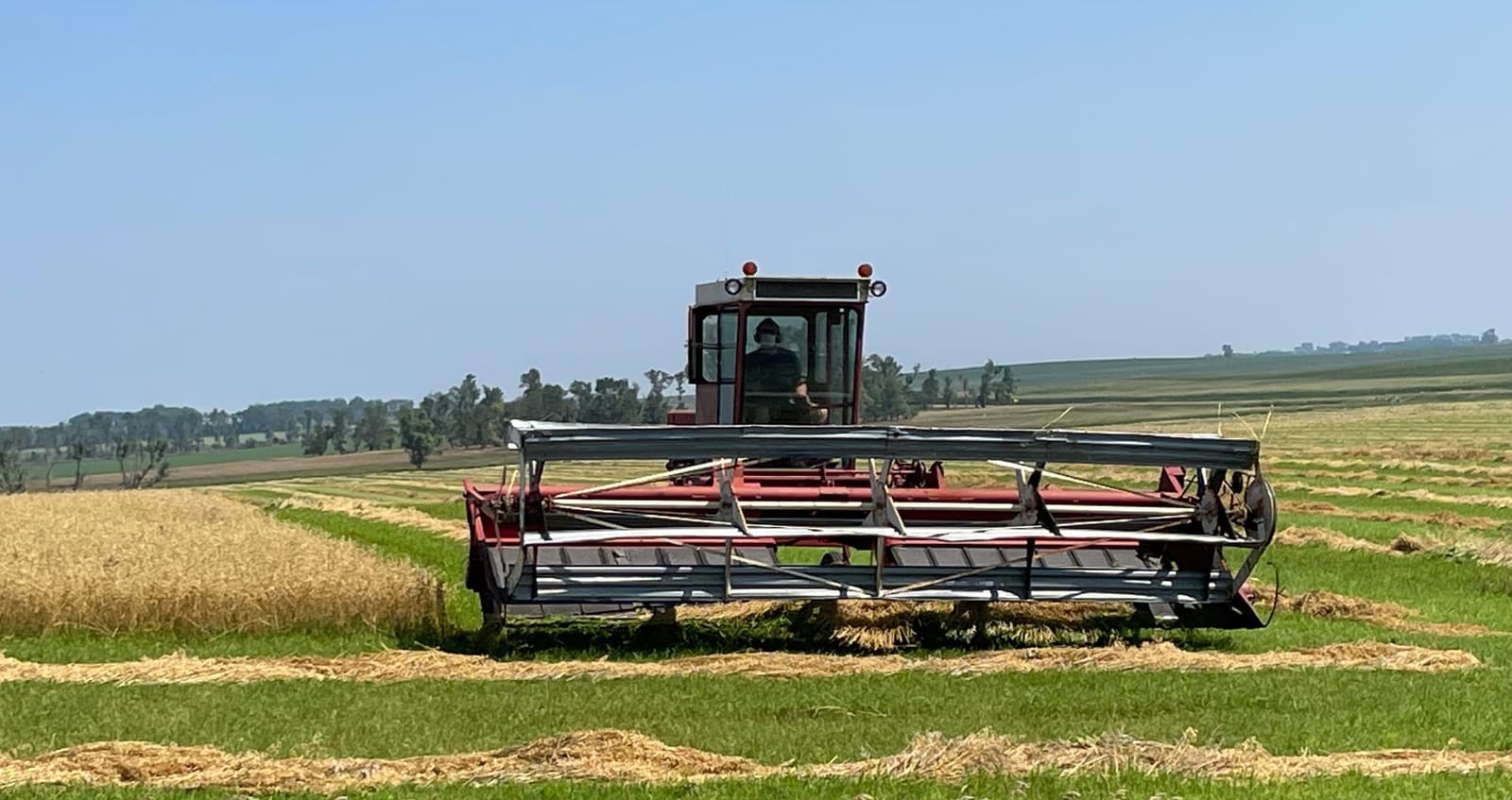If there is one part of the policy agenda of President Donald Trump that is affecting South Dakota the most, it is likely his trade war with China and his aggressive approach to implementing tariffs on international trading partners.
Trump's battle with China has led to retaliation by the Asian nation that included a freeze on purchases of soybeans from the U.S., including from South Dakota. Tariffs placed on imports from other nations also have affected the costs of goods purchased by a wide range of South Dakota businesses, industries and consumers.

Trump said tariffs will level the trade playing field with other countries and stop them from taking advantage of America. A major question hovers over the debate about the effectiveness of tariffs and who pays them. Trump insists foreign countries absorb the higher costs, but tariff opponents say American businesses and consumers are paying higher prices as a result.
That lack of clarity about the effectiveness and effects of tariffs showed up in a recent poll gauging the support among South Dakotans for Trump's tariff strategy.
The poll, co-sponsored by South Dakota News Watch and the Chiesman Center for Democracy at the University of South Dakota, revealed that among all voters statewide, 49% approve of Trump's tariff policies, 44% disapprove and 7% are unsure.
Mason-Dixon Polling and Strategy conducted the poll of 500 registered voters from all parties Oct. 16-19 using random selections from a telephone-matched state voter registration list that included both landline and cellphone numbers. Quotas were assigned to reflect voter registration by county. The margin for error is plus or minus 4.5 percentage points.
Other highlights of the poll show that support for tariffs falls largely along political party lines, with 70% of Republicans in approval, compared to only 8% approval among Democrats. Independent voters showed mixed support, with 43% in approval of tariffs and 52% disapproving.
The poll also showed that older voters are less supportive of Trump tariff policies than younger voters. While those aged 18-64 supported tariffs an average of 50%, 44% of voters aged 65 support the tariff policy.

Nathan Sanderson, president of the South Dakota Retailer’s Association, said the wide divide of tariff support based on political party affiliation likely mirrors support or disapproval of President Trump overall.
”If you’re a Republican, you’re by default looking to your Republican leaders for your policy direction, even if it’s a little different than in the past,” he said. “There remains very strong sentiment among Republicans that the U.S. has been getting the short end of the stick in trade policies in the past number of years.”
Individual income status may affect support
Sanderson said he wasn’t surprised to see poll results showing that South Dakotans age 65 and up are less supportive of tariffs than younger voters.
Retirees on fixed incomes don’t like market volatility that can negatively affect their retirement savings, and older Republicans may dislike policies that interfere with the GOP’s historical stance in favor of free markets and free trade.
Among the 4,000 members of the retailer’s group, Sanderson said support for tariffs likely depends on how they are affecting a business’s bottom line. A hardware store owner probably isn’t seeing much impact, while a toy store owner who buys goods from China is probably feeling some pain, he said.
“The overall sentiment from businesses in South Dakota is that they don’t see these tariffs as a long-term change but instead a short-term change to achieve some very specific policy goals," he said. "The question they’re asking is whether the short-term pain is worth the long-term benefits.”
Support for tariffs among the general population probably also depends on an individual’s overall financial status, Sanderson said.
“Generally speaking, individuals on the higher end of the income spectrum haven’t changed their spending habits at all,” he said. "But if you’re in the middle-to-lower-end of that range, you’ve changed your habits and are looking for deals and trading down on your spending.”
Tariffs cause uncertainty for soybean farmers
Soybean farmers in South Dakota were hit hard this fall by Trump’s ongoing trade war with China, as the Asian nation stopped buying soybeans from the U.S.
Producers had a bumper crop in 2025 but lost one of the largest foreign markets for their goods. And many are worried their beans will have to be stored in bins or on the ground and possibly go to waste if China sales don't restart.
Trump met with Chinese President Xi Jinping in late October and announced a deal in which China would end retaliatory tariffs and agree to buy 12 million metric tons of American soybeans before the end of 2025 and millions of tons in future years.
The back and forth nature of trade and tariff negotiations has left many South Dakota soybean farmers frustrated and uncertain about their financial futures, said Jerry Schmitz, executive director of the South Dakota Soybean Association.

“The more quickly we can move away from the uncertainty, the better,” he said. “Tariffs add more uncertainty and can increase the costs of other inputs, such as fertilizers.”
As a result, there is mixed support for tariffs among the producers in the state’s $2.8 billion annual soybean industry, Schmitz said. Due to the volatility of the tariff situation, their opinions might have shifted significantly even in the three weeks since the News Watch poll was conducted, he said.
“Some farmers look at tariffs placed on soybeans in past years and were happy that there was something going on to change and hopefully improve that. And there are some that just wish it had never happened,” Schmitz said.
A few contracts have been signed by South Dakota producers to sell beans to China this year, but no beans have moved yet and details of the trade deal remain unclear, he said.
“We need certainty in agriculture, including in commodity grains and in livestock. But the American people in general need certainty,” Schmitz said.
Tariffs also prompt volatility for ranchers
The South Dakota ranching industry also has been forced to keep a keen eye on Trump’s tariffs and how the president’s actions or pronouncements are affecting their bottom line.
News Watch reported in late September that while row crop producers were suffering under the trade war with China, the state’s livestock producers were seeing potentially record prices for their stock, due largely to supply and demand but also due to tariffs placed on beef from Mexico and other nations.
But recently, just a week after the poll on tariffs was conducted by News Watch in October, Trump upended U.S. cattle markets and angered many producers with his announcement the U.S. may quadruple imports of beef from Argentina in an attempt to lower meat prices for American consumers. Such a move, which hasn't taken place so far, could reduce profits for South Dakota beef producers.

The volatility caused by tariffs and Trump’s statements have put new financial pressures on South Dakota ranchers, said Warren Symens, a Marshall County farmer and rancher who is president of the South Dakota Cattlemen’s Association.
Symens reviewed the results of the News Watch poll and said he thinks the views of the more than 700 members of the association probably mirror the mixed support for tariffs by state voters overall.
“The more quickly we can move away from the uncertainty, the better. Tariffs add more uncertainty and can increase the costs of other inputs, such as fertilizers.”
-- Jerry Schmitz, executive director of the South Dakota Soybean Association
“It’s pretty reflective of what our membership thinks,” he said. “We understand that tariffs can be a tool in trade negotiations. But we know that long-term they are not an economic solution to anything.”
South Dakota ranchers rely on export markets to add value to their products, adding an estimated $400 in value to each head of cattle recently priced around $3,600, Symens said.
As with the state soybean farmers, livestock producers are enduring stress over the market volatility caused by the tariffs, he said.
“I think the one overarching feeling is that the uncertainty is what causes disruption,” Symens said. “We’re not in this business to trade on the (Board of Trade), we’re in the business to raise cattle and raise families.”
Read other stories on the latest South Dakota News Watch poll:




This story was produced by South Dakota News Watch, an independent, nonprofit organization. Read more stories and donate at sdnewswatch.org and sign up for an email to get stories when they're published. Contact investigative reporter Bart Pfankuch at bart.pfankuch@sdnewswatch.org.










